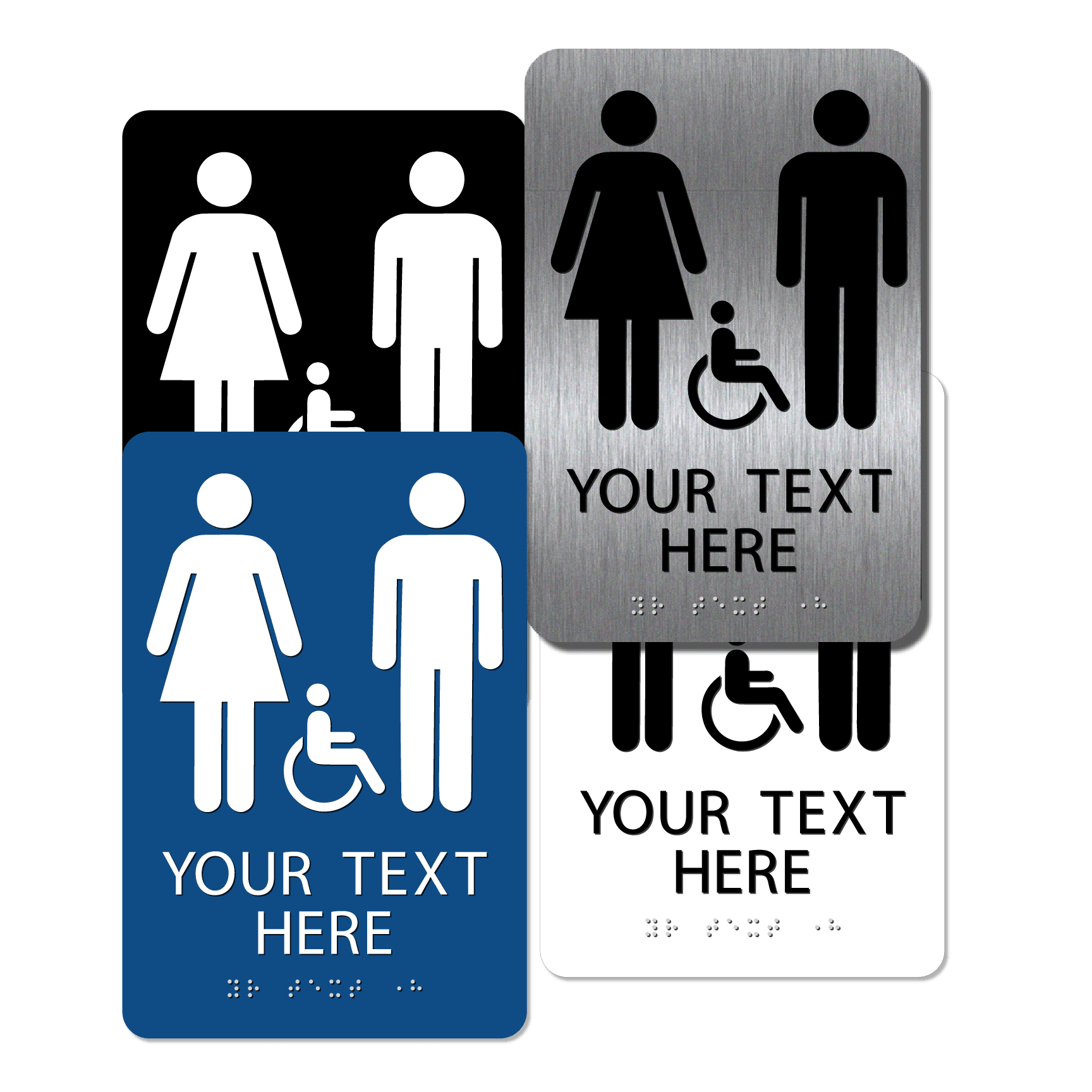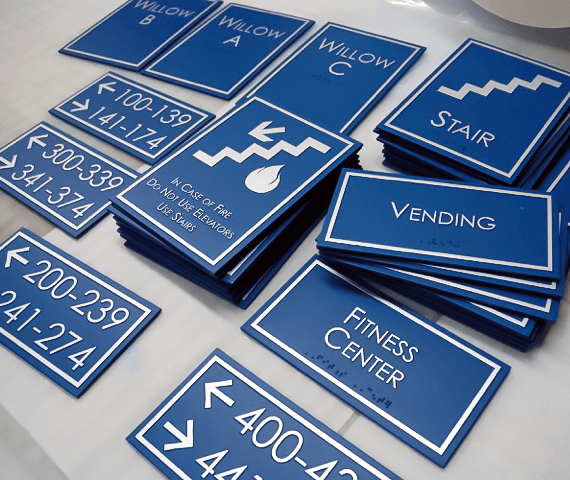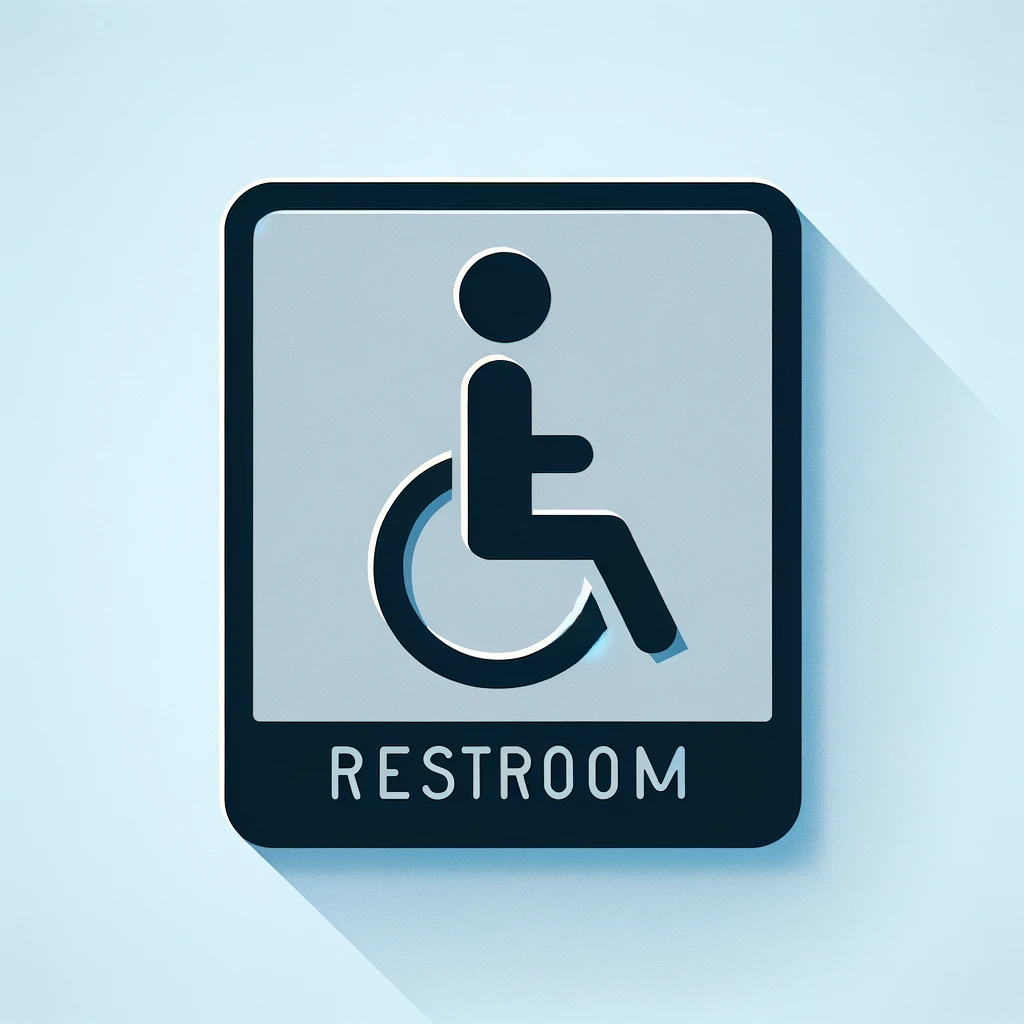Customizing ADA Signs to Satisfy Your Details Needs
Customizing ADA Signs to Satisfy Your Details Needs
Blog Article
Exploring the Key Features of ADA Signs for Enhanced Accessibility
In the realm of ease of access, ADA signs serve as quiet yet powerful allies, guaranteeing that rooms are comprehensive and accessible for individuals with specials needs. By incorporating Braille and tactile aspects, these indicators break barriers for the aesthetically impaired, while high-contrast shade plans and understandable typefaces cater to diverse aesthetic needs.
Value of ADA Compliance
Making sure compliance with the Americans with Disabilities Act (ADA) is vital for cultivating inclusivity and equal gain access to in public rooms and workplaces. The ADA, passed in 1990, mandates that all public facilities, employers, and transportation solutions fit individuals with disabilities, guaranteeing they appreciate the same rights and chances as others. Conformity with ADA requirements not just meets lawful obligations but also enhances an organization's credibility by demonstrating its commitment to diversity and inclusivity.
One of the crucial aspects of ADA compliance is the implementation of easily accessible signage. ADA signs are made to make sure that individuals with disabilities can conveniently navigate via rooms and buildings.
Furthermore, sticking to ADA policies can mitigate the threat of legal effects and prospective fines. Organizations that fall short to comply with ADA standards may encounter fines or suits, which can be both monetarily troublesome and destructive to their public image. Hence, ADA conformity is essential to cultivating an equitable setting for everyone.
Braille and Tactile Aspects
The unification of Braille and responsive components right into ADA signs embodies the principles of ease of access and inclusivity. It is commonly positioned beneath the corresponding text on signage to guarantee that individuals can access the details without visual assistance.
Tactile elements expand past Braille and consist of increased icons and personalities. These elements are developed to be discernible by touch, allowing people to determine room numbers, restrooms, exits, and various other important areas. The ADA sets details standards concerning the dimension, spacing, and positioning of these tactile components to maximize readability and make sure consistency throughout various environments.

High-Contrast Shade Plans
High-contrast color design play a pivotal duty in improving the visibility and readability of ADA signs for individuals with aesthetic impairments. These plans are important as they take full advantage of the distinction in light reflectance between message and background, making certain that indications are conveniently discernible, also from a distance. The Americans with Disabilities Act (ADA) mandates the use of specific color contrasts to suit those with limited vision, making it a critical aspect of conformity.
The efficiency of high-contrast colors depends on their ability to stick out in numerous lighting problems, consisting of dimly lit atmospheres and locations with glare. Normally, dark message on a light background or light text on a dark history is used to achieve ideal comparison. As an example, black text on a white or yellow background gives a stark visual difference that helps in fast acknowledgment and comprehension.

Legible Fonts and Text Dimension
When taking into consideration the design of ADA signage, the choice of clear fonts and suitable text size can not be overstated. These aspects are vital for making certain that indicators come to individuals with aesthetic problems. The Americans with Disabilities Act (ADA) mandates that typefaces have to be not italic and sans-serif, oblique, manuscript, very attractive, or of uncommon type. These demands help guarantee that the text is easily understandable from a range which the characters are appreciable to diverse audiences.
According to ADA guidelines, the minimal text elevation ought to be 5/8 inch, and it should boost proportionally with viewing range. Consistency in message size contributes to a natural visual experience, assisting individuals in browsing environments successfully.
Additionally, spacing in between letters and lines is indispensable to clarity. Ample spacing stops personalities from appearing crowded, improving readability. By adhering to these requirements, developers can considerably boost ease of access, making certain that signage offers its designated objective for all individuals, no matter their aesthetic capacities.
Effective Positioning Approaches
Strategic positioning of ADA signs is crucial for taking full advantage of availability and making certain conformity with legal requirements. ADA guidelines specify that indicators must be installed at a height between 48 to 60 inches from the ground to guarantee they are within the line of view for both standing and seated individuals.
Furthermore, indications have to be put adjacent to the lock side of Click Here doors to permit simple identification prior to entry. Uniformity in indication positioning throughout a center enhances predictability, lowering confusion and boosting overall blog customer experience.

Conclusion
ADA signs play an important role in promoting accessibility by integrating attributes that address the demands of people with handicaps. These aspects collectively promote an inclusive environment, emphasizing the relevance of ADA conformity in making sure equal access for all.
In the realm of accessibility, ADA indicators offer as quiet yet powerful allies, ensuring that rooms are inclusive and accessible for people with specials needs. The ADA, enacted in 1990, mandates that all public centers, companies, and transportation services suit people with specials needs, ensuring they enjoy the go to this site same civil liberties and chances as others. ADA Signs. ADA signs are designed to make sure that people with disabilities can conveniently navigate via areas and buildings. ADA standards stipulate that indicators ought to be placed at a height in between 48 to 60 inches from the ground to ensure they are within the line of view for both standing and seated individuals.ADA indications play an important duty in promoting access by integrating attributes that deal with the demands of individuals with specials needs
Report this page